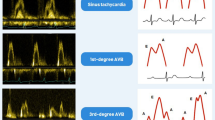Abstract
Cardiac dyssynchrony often accompanies patients with heart failure (HF) and can lead to an increase in mortality rate. Cardiac resynchronization therapy (CRT) has been shown to provide substantial benefits to the HF population with ventricular dyssynchrony; however, there still exists a group of patients who do not respond to this treatment. In order to better understand patient response to CRT, it is necessary to quantitatively characterize both electrical and mechanical dyssynchrony. The quantification of mechanical dyssynchrony via characterization of contraction strain field inhomogeneity is the focus of this modeling investigation. Raw data from a 3D finite element (FE) model were received from Roy Kerckhoffs et al. and analyzed in MATLAB. The FE model consisted of canine left and right ventricles coupled to a closed circulation with the effects of the pericardium acting as a pressure on the epicardial surface. For each of three simulations (normal synchronous, SYNC, right ventricular apical pacing, RVA, and left ventricular free wall pacing, LVFW) the Gauss point locations and values were used to generate lookup tables (LUTs) with each entry representing a location in the heart. In essence, we employed piecewise cubic interpolation to generate a fine point cloud (LUTs) from a course point cloud (Gauss points). Strain was calculated in the fiber direction and was then displayed in multiple ways to better characterize strain inhomogeneity. By plotting average strain and standard deviation over time, the point of maximum contraction and the point of maximal inhomogeneity were found for each simulation. Strain values were organized into seven strain bins to show operative strain ranges and extent of inhomogeneity throughout the heart wall. In order to visualize strain propagation, magnitude, and inhomogeneity over time, we created 2D area maps displaying strain over the entire cardiac cycle. To visualize spatial strain distribution at the time point of maximum inhomogeneity, a 3D point cloud was created for each simulation, and a CURE index was calculated. We found that both the RVA and LFVW simulations took longer to reach maximum contraction than the SYNC simulation, while also exhibiting larger disparities in strain values during contraction. Strain in the hoop direction was also analyzed and was found to be similar to the fiber strain results. It was found that our method of analyzing contraction strain pattern yielded more detailed spacial and temporal information about fiber strain in the heart over the cardiac cycle than the more conventional CURE index method. We also observed that our method of strain binning aids in visualization of the strain fields, and in particular, the separation of the mass points into separate images associated with each strain bin allows the strain pattern to be explicitly compartmentalized.
Similar content being viewed by others
References
Foley PWX, Leyva F, Frenneaux MP (2009) What is treatment success in cardiac resynchronization therapy?. Europace 11: 58–65
Gottipaty VK, Krelis SP, Fei LK et al (1999) The resting electrocardiogram provides a sensitive and inexpensive marker of prognosis in patients with chronic congestive heart failure. J Am CollCardiol 33: abstract 145A
Grines CL, Bashore TM, Boudoulas H, Olson S, Shafer P, Wooley CF (1989) Functional abnormalities in isolated left bundle branch block. The effect of interventricular asynchrony. Circulation 79: 845–853
Hawkins NM, Petrie MC, Burgess MI, McMurray JJV (2009) Selecting patients for cardiac resynchronization therapy: The fallacy of echocardiographic dyssynchrony. J Am CollCardiol 53(21): 1944–1959
Helm RH, Lecleroq C, Faris OP et al (2005) Cardiac dyssynchrony analysis using circumferential versus longitudinal strain; implications for assessing cardiac resynchronization. Circulation 111: 2760–2767
Ho CY, Solomon SD (2006) A Clinician’s Guide to Tissue Doppler Imaging. Circulation 113: 396–398
Iuliano S, Fisher SG,Karasik PE, Fletcher RD, Singh SN for the Department of Veterans Affairs Survival Trial of Antiarrhythmic Therapy in Congestive Heart Failure: (2002) QRS duration and mortality in patients with congestive heart failure. Am Heart J 143: 1085–1091
Kerckhoffs RCP, Neal M, Gu Q, Bassingthwaighte JB, Omens JH, McCulloch AD (2007) Coupling of a 3D finite element model of cardiac ventricular mechanics to lumped systems models of the systemic and pulmonic circulation. Ann Biomed Eng 35: 1–18
Kerckhoffs RCP, McCulloch AD, Omens JH, Mulligan LJ (2007) Effect of pacing site and infarct location on regional mechanics and global hemodynamics in a model based study of heart failure. LNCS 4466: 350–360
Lamia B, Pinsky, MR (2008) Quantification of improved left ventricular performance during cardiac resynchronization therapy. Yearbook Intensive Care Emerg Med, SectionII:65–75
Leclercq C, Faris O, Tunin R et al (2002) Systolic improvement and mechanical resynchronization does not require electrical synchrony in the dilated failing heart with left bundle-branch block. Circulation 106(14): 1760–1763
Luo X, Cao T, Li Z, Duan Y (2009) A preliminary study on the evaluation of relationship between left ventricular torsion and cardiac cycle phase by two-dimensional ultrasound speckle tracking imaging. Int J Cardiovasc Imaging 25: 559–568
Author information
Authors and Affiliations
Corresponding author
Rights and permissions
About this article
Cite this article
Nazzal, C.M., Mulligan, L.J. & Criscione, J.C. Efficient characterization of inhomogeneity in contraction strain pattern. Biomech Model Mechanobiol 11, 585–593 (2012). https://doi.org/10.1007/s10237-011-0335-x
Received:
Accepted:
Published:
Issue Date:
DOI: https://doi.org/10.1007/s10237-011-0335-x




